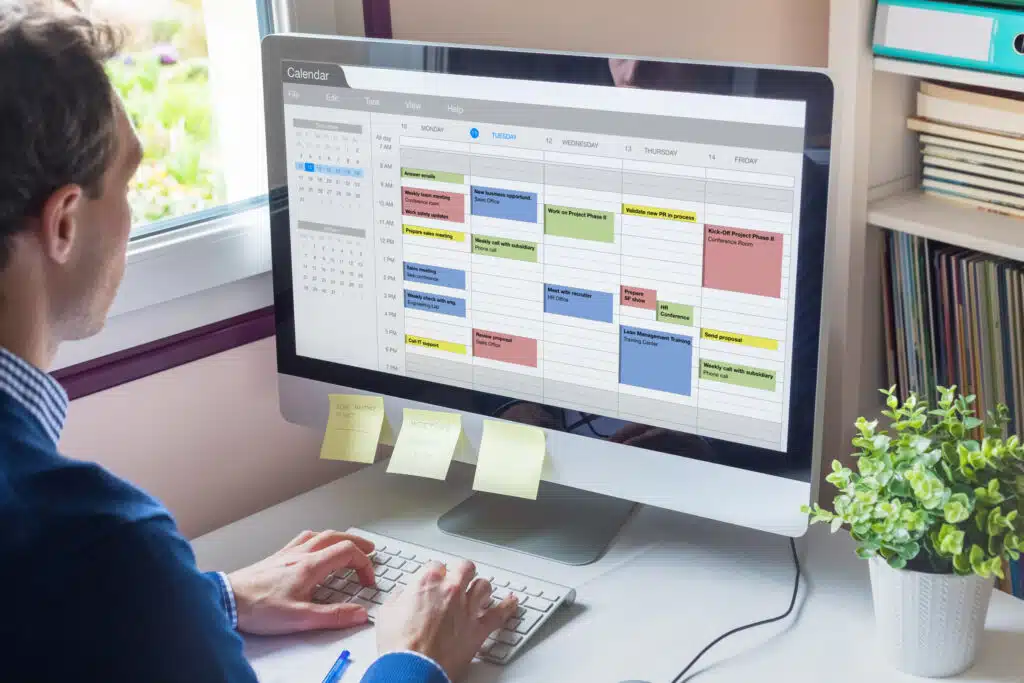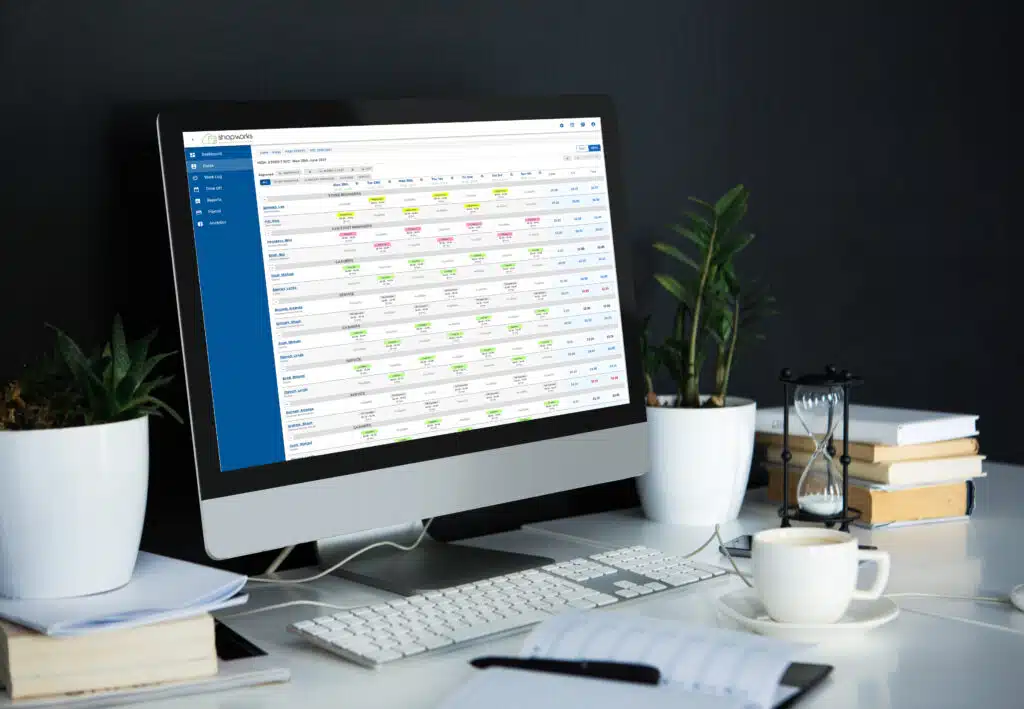Well organised and planned employee scheduling is known to create efficient operations. It involves allocating shifts to meet a pre planned level of work and takes into consideration other factors such as employee availability, preferences, skills and Working Time Directive regulations.
To properly answer the question of ‘why do I need scheduling software?’ we will look at the subjects in more detail. Employee scheduling sometimes referred to as rota scheduling is a key function for any business, particularly those with hourly paid or shift workers. Scheduling staff creates an order and a flow to your business which ensures your team knows when they’re supposed to work and what tasks and roles you want them to perform. In this article we look in greater detail why you might need an employee scheduling software and its benefits.
Who would need an employee scheduling solution?
Base on our experience we believe that you would need to use employee scheduling software to achieve some or all of the following goals:
- Manage the scheduling of large numbers of staff.
- Ensure understaffing is eliminated and the right number of staff are working to match customer demand.
- Identify and reduce staffing overspend.
- Get a central view of all matters relating to your employee scheduling.
- Help staff and managers manage absence, working preferences and shifts.
- Ensure smooth communication of who is meant to be where and what roles they are required to do whilst at work.
- Ensure all shifts are compliant with labour regulations such as the Working Time Directive.
- Make it easier to manage changes to staffing as they occur such as sickness and shift swapping.
- Carry out planning and budgeting tasks around staffing levels, customer demand and costs.
- Analyse data to ensure better decision making.

How to create a good employee rota?
We have built and analysed hundreds of thousands of rotas and there are a number of factors that a good employee schedule must take into consideration to keep both employees and employers happy. These include:
- Meets demand: does your employee schedule have the right number of employees working at the right time with the right skills to meet your customer demand?
- It’s fair: are all unpopular shifts evenly distributed, do all staff get a fair share of overtime or hours worked?
- It’s complaint: does each shift meet working time directive rules and any local agreements you have with your employees?
- Cost effective and on budget: is your employee schedule as cost effective as possible?
- Covers tasks: do you have sufficient resources and skills on site to do all of the tasks that are required during that shift?
- Supports time off: the employee schedule should support and honour their booked time off.
- It takes into account staff availability and preferences: a good employee schedule will avoid scheduling staff when they can’t work and try to avoid scheduling them when they would prefer not to work.
These factors should be taken into consideration regardless of how you are building your rota, if this is a manual process or if you are using a scheduling software these functions should be built in.

Why do I need a good employee scheduling tool?
Creating and maintaining good employee schedules brings a number of benefits to an organisation. Below we’ve listed some of the greatest benefits we regularly come across:
- Increased revenue: having the right amount of staff on to avoid customer queues or increase table rotation in a restaurant will increase total revenue. A properly planned employee schedule is key to delivering this.
- Low employee turnover: fair and equitable rotas with no working time directive breaches are highly correlated with employee retention statistics amongst shift workers.
- Productivity: By creating the right employee schedule employees are deployed when demand is highest ensuring that unproductive quiet periods are not over staffed and productivity metrics don’t take a hit.
- Operational efficiency: By having systems in place to ensure your staff know what is required of them and when, it will ensure your business is running smoothly.
- Customer satisfaction: By having an effective employee scheduling process or a system you ensure that spikes in customer demand are always met by satisfied employees.

How poor employee scheduling can impact your organisation?
In this section we look at some of the major problems that can come with poor employee scheduling and what organisations should look out for.
- Lower Sales: If you don’t have enough staff to serve customers and queues or waiting times are excessive, customers will go elsewhere either now or in the future. This has a negative impact on revenue.
- Fines for non compliance: Breaches of labour laws such as working time directive often come with high fines, which a good employee scheduling tool can help you avoid.
- High employee turnover: If employees feel they are unfairly scheduled, overworked trying to meet high customer demand, or bored because they have nothing to do during quiet periods, they are more likely to leave their job.
- Low employee morale: If your employees feel they are unfairly scheduled it will have a negative impact on morale in the workplace.
Still Have Questions Regarding Employee Scheduling?
Just fill in the form below to speak to someone from our expert team.




